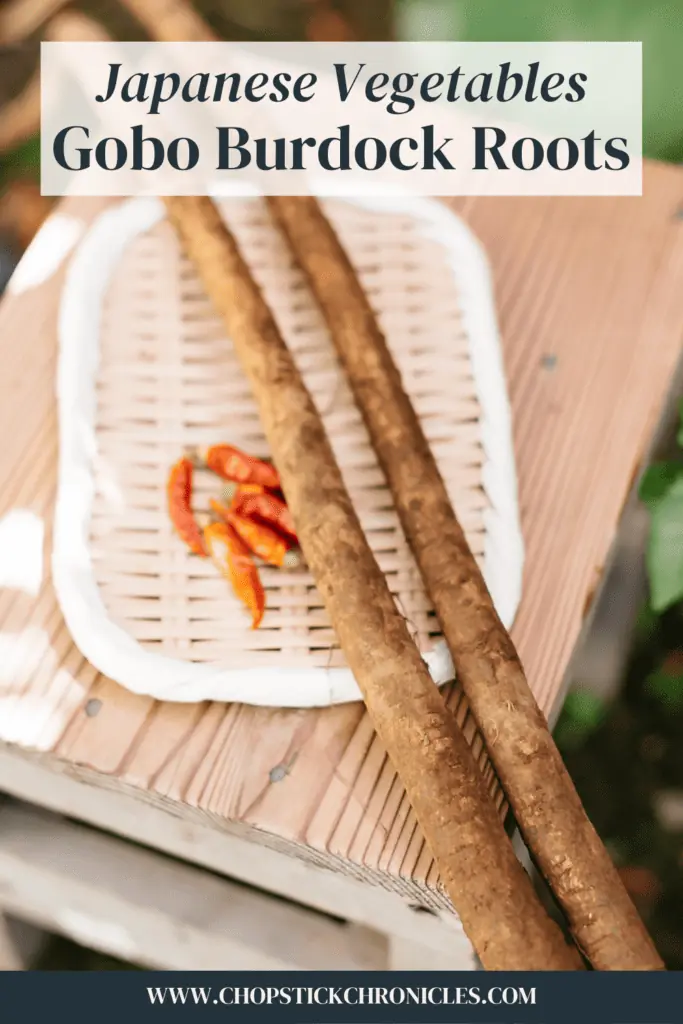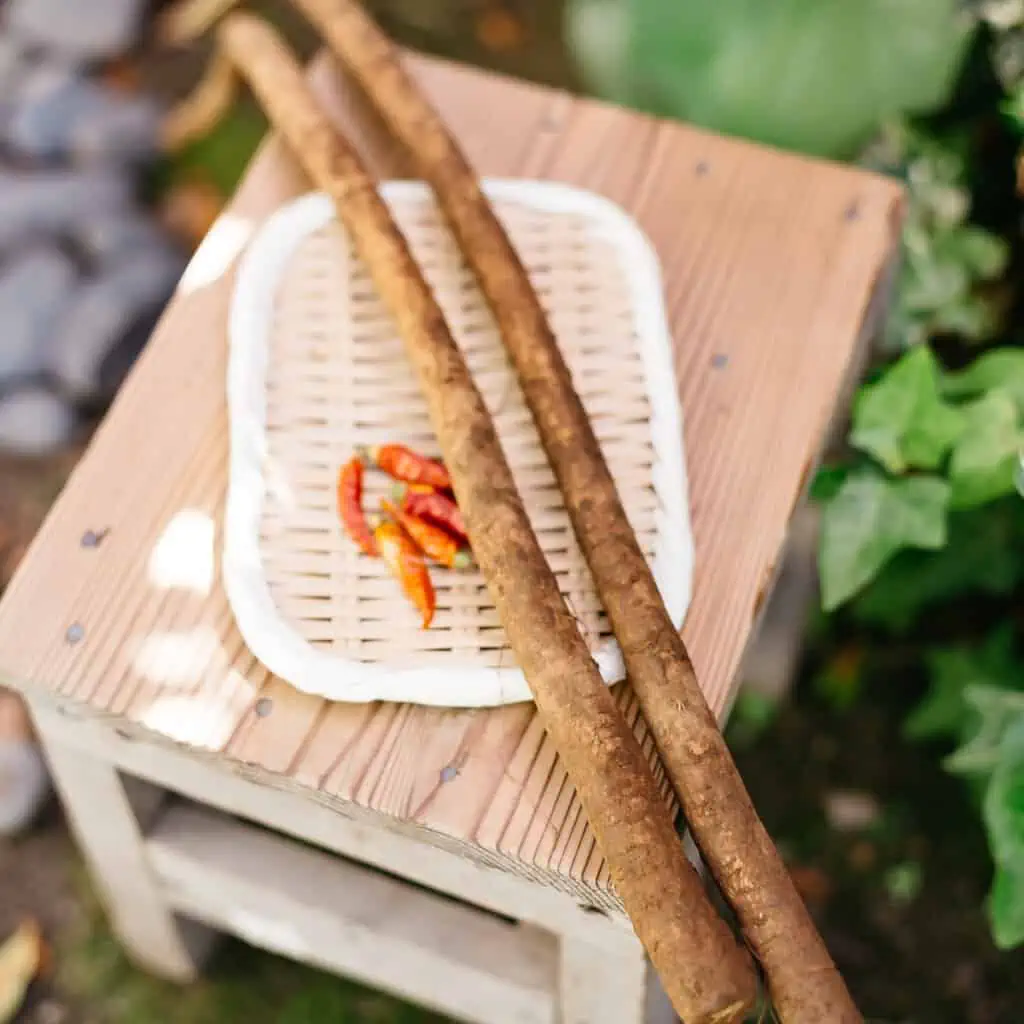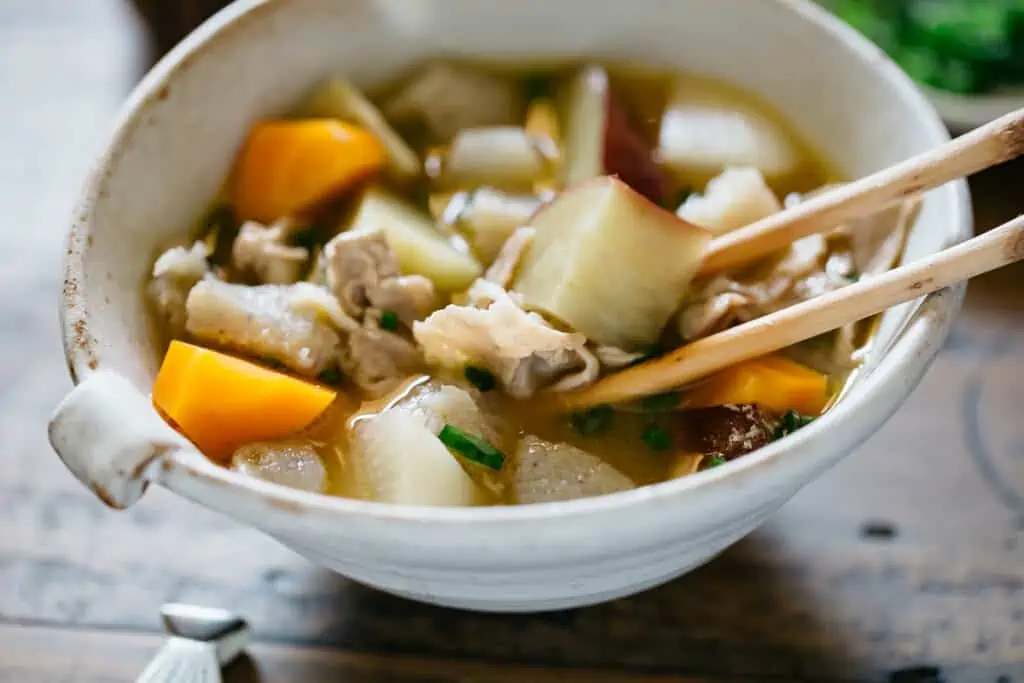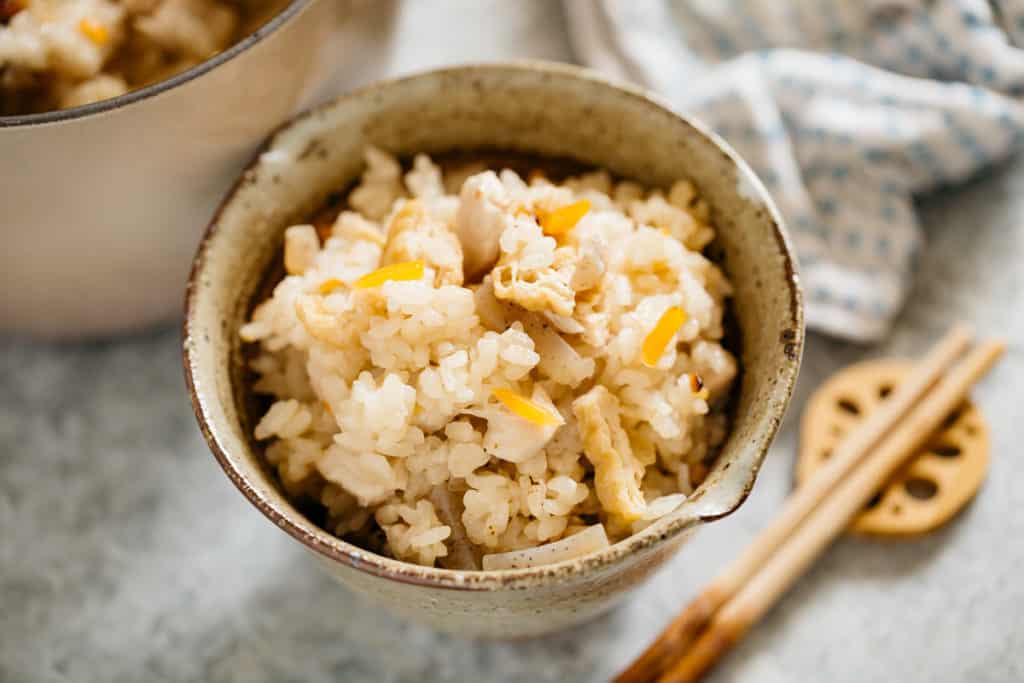Gobo (burdock roots), scientifically known as Arctium lappa, is a type of root vegetable that has been used for centuries in traditional Chinese and Japanese medicine for the numerous health benefits. These long, slender roots are a rich source of essential nutrients including vitamins, minerals and antioxidants. Gobo burdock root is also a popular ingredient in Japanese cuisine due to its unique flavour profile and versatility in cooking. Discover the nutritional benefits of gobo burdock roots and some of its culinary uses in Japanese cuisine along with recipes you can try today!
Table of contents
What is Gobo Burdock roots
Gobo, also known as burdock root, is a root vegetable from the roots of the burdock plant. It has been consumed for centuries in Asia and Europe and is used extensively in Japanese cuisine. Gobo has the appearance of a tree root with a long, slender shape; brownish smooth skin; and a hard texture and white flesh inside.
Nutritional Benefits of Gobo
Gobo is a highly nutritious vegetable and contains numerous health benefits. It has high levels of dietary fiber, which helps to promote digestive health and prevent constipation. Additionally, gobo contains antioxidants that help to reduce inflammation in the body. Gobo also contains minerals such as iron, potassium, calcium, and magnesium that are essential for maintaining healthy bones.
Gobo Culinary Uses
Gobo is a versatile vegetable that is often used in Japanese cuisine. Its nutty flavor and crisp texture make it a popular ingredient in many dishes. Not only does burdock root add depth of flavor to meals, but it is also packed with nutrients that offer numerous health benefits. It’s most frequently used to make kinpira gobo and soup dishes.
Kinpira Gobo – This traditional Japanese side dish combines the earthy sweetness of burdock root with the fiery kick of red chili peppers. The gobo is sauteed with a blend of seasoning that makes it a delicious side dish and great way to add extra veggies to any meal.
Tonjiru – This hearty and flavorful dish is not your ordinary soup – it’s a symphony of bold flavors and rich textures that will leave you craving for more. Tonjiru takes miso soup up a notch by adding succulent slices of pork, an assortment of vegetables, and a delightful mix of umami-packed seasonings.
Japanese seasoned rice – This delightful dish combines perfectly steamed rice with an enticing medley of seasoned ingredients. Gobo burdock root is one of those complementary ingredients that enhance the flavour of seasoned rice.
Gobo preparation and cooking tips
When fresh gobo burdock roots are available, choose unwashed gobo. Gobo will lose its distinctive flavour when the mud is removed from the burdock. Also choose gobo size about 1.5 to 2 cm in diameter with a straight form that gradually tapers towards the tip with fewer fibrous roots attached. Also avoid thick overgrown ones as they will be hollow inside. Gobo is in season between April to May and November to February so this will be the best time to find it.
Peel the skin thinly because Gobo’s unique scent and umami are near the skin. Do this by either just scraping it off with a kitchen knife or peeling using scrunched aluminum foil or a scrubbing brush.
Burdock has a strong astringent bitterness and it turns brown due to oxidation when it is cut. To prevent discoloration, soak in water immediately after cutting and to remove the astringent taste. If you want a white finish, soak the cut in vinegar water.
How to Cut Gobo burdock roots
he tough exterior of burdock root can make it challenging to prepare and cut properly. I will walk you through some of the Japanese cutting techniques of to prepare gobo like a pro.
Sasagaki – Sasagaki is a traditional Japanese technique of cutting burdock root that produces thin strips resembling bamboo leaves. This method allows for even cooking and enhances the visual appeal of dishes such as kinpira gobo (stir-fried burdock) or Kakiage tempura.
Sengiri – Shredding is ideal for soups and stews such as tonjiru. Shredded gobo burdock adds texture and flavor to soups, stews, stir-fries, and salads. The long strands provide an enjoyable eating experience while allowing flavors to penetrate evenly throughout your dish.
Hosogiri – Hosogiri, or Julienne, is a classic cutting technique that transforms gobo burdock roots into delicate matchstick-like pieces. These julienned roots are perfect for stir fries.
Where can you get gobo burdock roots
You can get your hands on fresh and high-quality gobo burdock roots from various places.
1. Asian Grocery Stores: Gaining immense popularity in recent years, gobo burdock roots are commonly found in well-stocked Asian grocery stores or supermarkets. These stores typically cater to a diverse range of Asian cuisine enthusiasts and offer a wide variety of exotic ingredients. Explore the produce section – chances are high that you will spot these earthy brownish-white fibrous roots nestled amidst other vegetables.
2. Local Farmers’ Markets: One of the best ways to source fresh and organic gobo burdock roots is by visiting your local farmers’ markets. These markets often showcase an array of seasonal and less common produce which makes it easier to find things like gobo.
3. Grow your own : Why not give it a try growing your own!? Growing and harvesting gobo burdock roots can be rewarding and beneficial. By following the proper techniques for planting, maintaining, and harvesting gobo, you can enjoy a fresh supply of this nutritious food right from you own backyard.
How to store Gobo burdock roots
Burdock becomes hard when dried, so be careful not to expose it to the wind. Wrap it in newspaper and put it in a cool, dark place. If you have a garden, it is recommended to bury it in the soil so that it can be stored for a long time. Before using it, remove the dirt, wash it well, and peel off the skin.







Leave a Reply